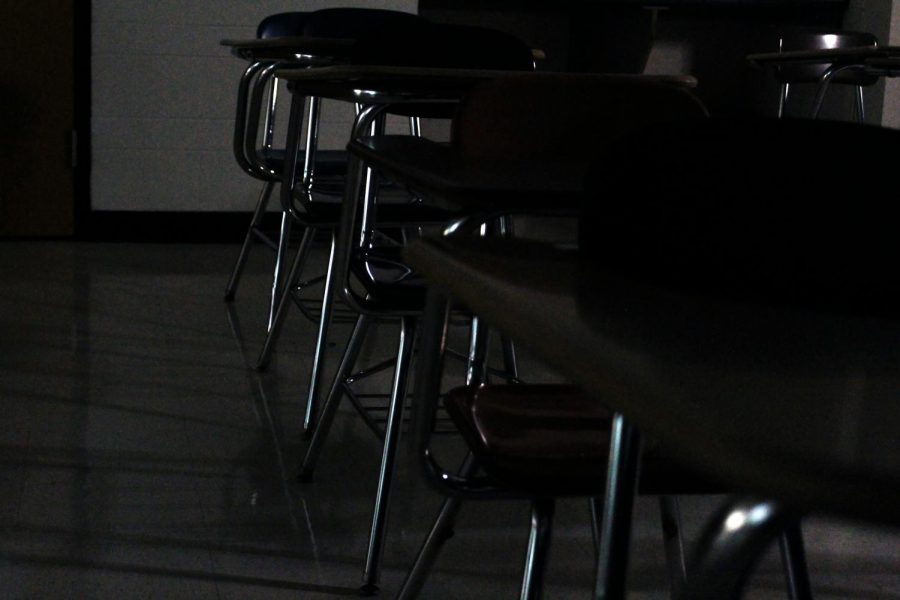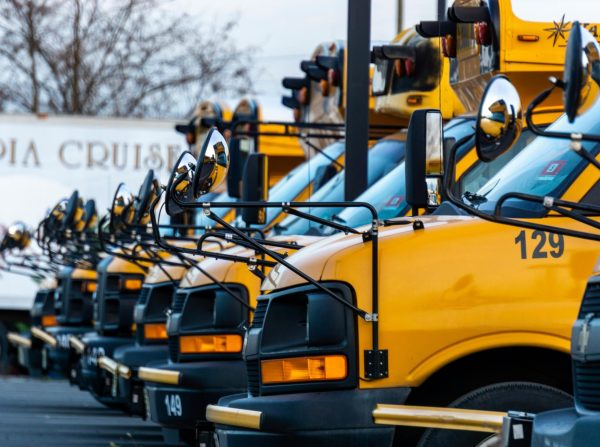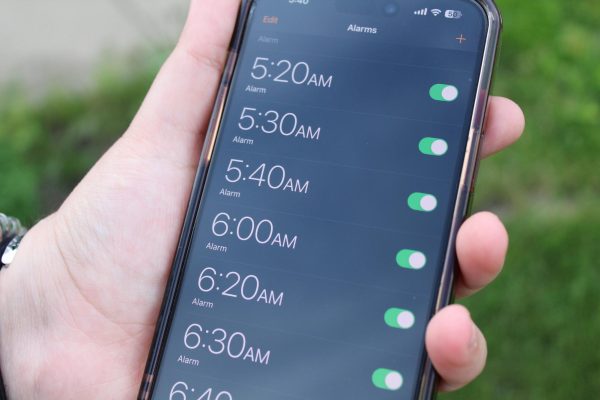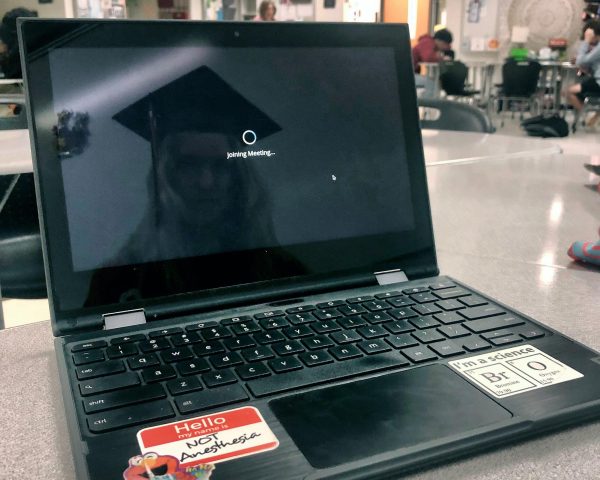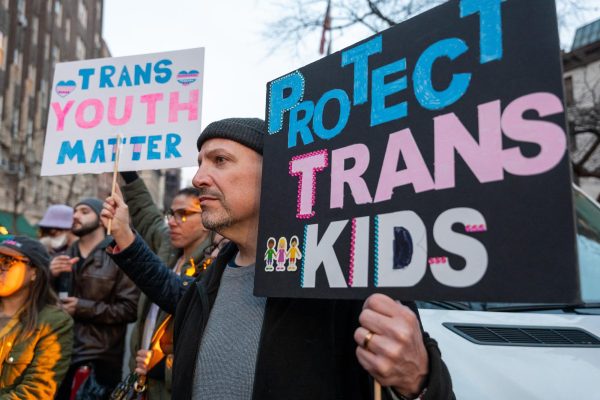Opinion: Bring students back
Now that ISBE and IDPH have issued revised guidance for schools regarding COVID-19, let’s do what’s best for student learning and mental health
A row of desks sits empty in a West Campus classroom, every other featuring a sticker with a Warrior head that says, “Social distancing required. Please don’t sit here.” Now that ISBE and IDPH have issued new guidance, these stickers may become obsolete
Students all over the country have been waiting for school to go back to normal, where they can see their friends, acquaintances, and teachers, on a regular, normal basis. But, due to COVID and social distancing guidelines, schools have not been able to invite everyone back in schools at once.
At least not until now.
On March 9, the Illinois Board of Education and the Illinois Department of Public Health held a meeting to determine whether or not schools should return to fully in-person learning. In their Revised Public Health Guidance for Schools, ISBE and IDPH states that they have made “important updates to the essential, layered mitigation strategies that facilitate the safe return to in-person instruction,” including social distancing guidelines that have decreased to 3-6 feet while still maintaining proper mask wear.
The basics of this new proposal include proper mask usage, maintaining social distancing at three feet, increasing in cleanliness or disinfection, and proper hygiene such as hand washing. Additionally, it is no longer necessary for students or staff to have in school temperature screenings.
This is a bold step for schools all across Illinois because, with these guidelines, students will be able to attend school more normally and not have to worry about the stressors of online learning.
Opening the schools and creating a more “normal” environment for students is one of the best things that the ISBE and IDPH could do at this moment. With students being stuck at home a majority of the time, and not having as much interaction as they used to have, there have been higher anxiety and depression rates.
The Mott Poll report studied how COVID and not being in school has impacted students’ mental health. “Most parents (73%) report that COVID-19 has had a very or somewhat negative impact on their teen’s ability to interact with their friends,” it states. “Around half of parents (46%) say they have noticed a new or worsening mental health condition for their teen since the start of the pandemic.”
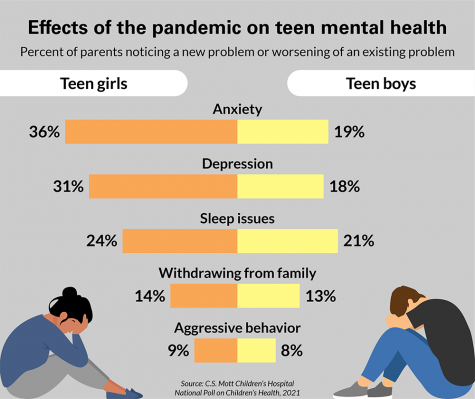
Following this data, they have found that anxiety, depression, and aggressive behaviour rates have almost doubled in the course of 2020. This data proves that without crucial social structures such as in-person classes, students are more likely than ever to have mental illnesses or abnormal changes in behavior. Opening schools would offer more opprotunities for socialization and getting help with mental health issues.
Obviously, as teenagers, there are a multitude of reasons for not wanting to go back to school. But, according to this data provided, now, more than ever, students want to go back, and they want those interactions that they once took for granted.
Although this movement is really good for progress, socialization, and a chance to regain normalcy, some may argue that it is still not safe. According to Teen Vogue , “In Cobb County, three educators have died from COVID-19, sparking protests by teachers.” They then go on to mention how schools such as Chicago Public Schools fought against the teachers union and opening back up, leaving them short of staff, since many are not willing to go in.
Not only are many outraged that students and staff are expected to go back to school, but they are upset because of the lowered social distancing expectations. Maintaining a good distance from others is one of the primary ways to keep yourself and others safe, but by lowering the number is the school board risking the lives of others, or are they doing the right thing?
Even with all these doubts, the school systems want to move forward in Illinois, and are willing to take any risks. With simple guidelines such as the ones provided by the IDPH, it will be an easier adjustment for schools to begin transitioning to in-person classes. This decision is one that will help students learn during such a hard time, because they won’t have to worry about not getting one-on-one time with their teachers, and additionally they can get resources they need, and socialize. According to ebook titled “Sociology” published by the University of Minnesota, “socialization makes it possible for us to fully function as human beings. Without socialization, we could not have our society and culture. And without social interaction, we could not have socialization.]”
Administrators at McHenry High School, such as Hilary Agnello, have seen a fluctuation in grades over the past year. With the start of hybrid and in-person learning, she says she has seen an increase in students’ grades and engagement.
“I feel that overall grades are better [since starting hybrid learning],”explained Agnello. “At the beginning of last semester, when students were completely remote I felt that students were still very unaccustomed to attending school for regular hours, and as time went on the amount of missed classes grew which resulted in lower grades. This semester, with more students in school there are less missed classes and naturally higher grades.”
This has been a challenging time for everyone, and with Illinois along with other states making a change, we are closer to helping the education system. Closer to getting the United States to move forward — and closer, to normalcy.



